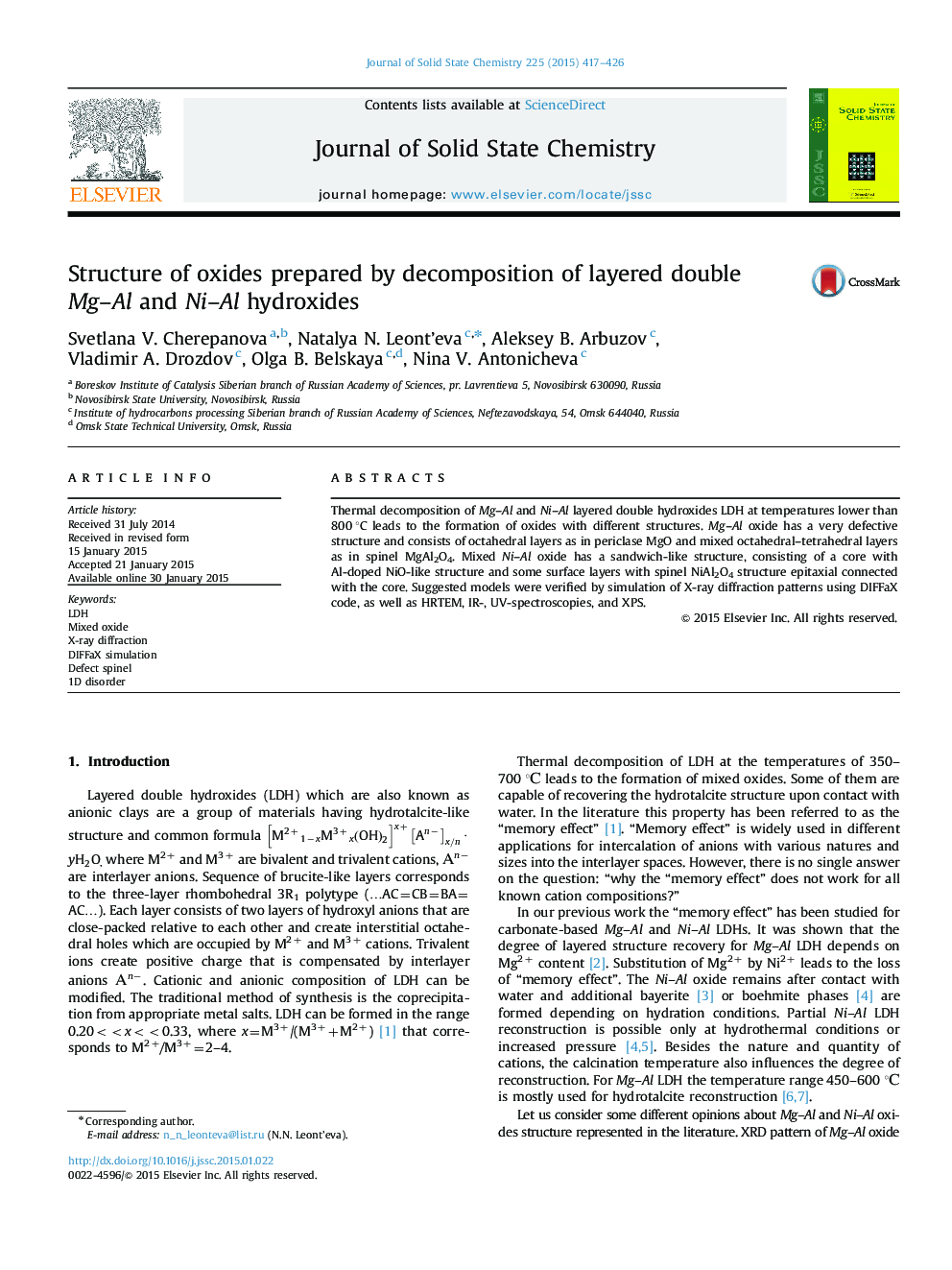| Article ID | Journal | Published Year | Pages | File Type |
|---|---|---|---|---|
| 1331649 | Journal of Solid State Chemistry | 2015 | 10 Pages |
•We study products of Mg(Ni)–Al LDH decomposition by calcination at 500(400)–800 °C.•In Mg–Al/Ni–Al LDH Al ions migrate into interlayers/on the surface during decomposition.•Mg–Al oxide represents sequence of periclase- and spinel-like layers with vacancies.•Ni–Al oxide has a sandwich-like structure with NiO-like core and surface spinel layers.•The models explain the presence/absence of “memory effect” for Mg–Al/Ni–Al oxides.
sThermal decomposition of Mg–Al and Ni–Al layered double hydroxides LDH at temperatures lower than 800 °C leads to the formation of oxides with different structures. Mg–Al oxide has a very defective structure and consists of octahedral layers as in periclase MgO and mixed octahedral–tetrahedral layers as in spinel MgAl2O4. Mixed Ni–Al oxide has a sandwich-like structure, consisting of a core with Al-doped NiO-like structure and some surface layers with spinel NiAl2O4 structure epitaxial connected with the core. Suggested models were verified by simulation of X-ray diffraction patterns using DIFFaX code, as well as HRTEM, IR-, UV-spectroscopies, and XPS.
Graphical abstractIn the Mg–Al layered double hydroxide Al3+ ions migrate into interlayers during decomposition. The Mg–Al oxide represents sequence of octahedral and octahedral–tetrahedral spinel layers with vacancies. The Ni–Al oxide has a sandwich-like structure with NiO-like core and surface spinel layers as a result of migration of Al3+ ions on the surface. The models explain the presence and absence of “memory effect” for the Mg–Al and Ni–Al oxides, respectively.Figure optionsDownload full-size imageDownload as PowerPoint slide
